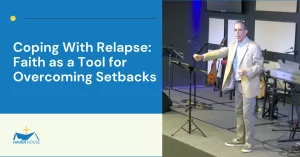
Table of Contents
Over the years, fentanyl has been in the limelight of recreational use — and not for a good reason. While healthcare professionals consider the drug to be safe and effective under monitored conditions, fentanyl is still highly likely to be abused.
Fentanyl addiction comes in many forms. Some people would create designer fentanyl analogs, which are nearly similar to the original drug, while others mix it with batches of heroin. Amidst the rising dangers associated with the drug, people battling with opioid use disorder can find resources and people who can help with fentanyl addiction treatment.
What is fentanyl? How does it impact several people across the U.S.? Let’s find out.
What Is Fentanyl?
The Centers for Disease Control and Prevention (CDC) explains that fentanyl is 50 times more potent compared to heroin and is about 100 times more potent than morphine. The CDC also points out that it is the strongest opioid pain reliever available for use for medical treatment.
Fentanyl is a Schedule II prescription drug used for pain management following surgery or for severe or chronic pain treatment in general. It’s also a synthetic opioid, which explains why it’s stronger than morphine. Typically, medical professionals would prescribe the drug to patients who have developed physical tolerance to other opioids like morphine or hydrocodone.
A lot of drug manufacturers combine the drug with heroin to increase its potency, while others sell fentanyl as heroin. These practices sparked the rise of drug overdose-related deaths in the past few years, as several users who think they are taking pure heroin accidentally overdose.
How Is Fentanyl Used?
Doctors and clinicians use fentanyl in various ways in a monitored setting depending on the intended professional medical use. With a doctor’s supervision, fentanyl is administered in the following forms:
- Intramuscular shot
- Skin patches
- Cough drop-like lozenges
- Lollipops
- Oral or nasal sprays
Of these, the patch form is more commonly used for outpatient or at-home treatment due to its ease of usage. It works by slowly releasing the drug through the skin and into the bloodstream in a span of more than 20 to 72 hours.
Although there are actual prescriptions or legitimate medications when it comes to recreational use, there is illicit fentanyl imported in the U.S. that are available in the form of:
- Powder
- Pressed pills
- Eyedroppers
- Nasal sprays
- Blotter paper
Dangers of Fentanyl Addiction
Fentanyl and its analogs are significantly strong, which explains why accidental overdoses and fatal consequences have become common. A lot of individuals either mix or substitute these analogs with heroin. Since the drug is stronger than heroin, the risk of overdose and death increases.
The rise of drug overdose rates annually is partially attributed to fentanyl addiction. In 2018, 67,367 Americans died from a drug-related overdose, and the number nearly doubled in 2010. Of these, 31,335 died due to an overdose with the synthetic opioid fentanyl. Today, the drug is now the leading cause of death concerning drug overdose.
Risks of Fentanyl Use
Similar to any opiate, fentanyl poses a great risk of tolerance, misuse, and addiction. Once an individual suddenly stops taking the drug, physical dependence results in symptoms of fentanyl addiction withdrawal.
These symptoms typically begin within 12 hours from the last dose and last for a week or more. An individual experiencing fentanyl addiction withdrawal may experience the following:
- Severe generalized pain
- Dilated pupils
- Insomnia
- Vomiting and diarrhea
- Agitation
- Goosebumps
- Anxiety
- Runny nose
- Chills
- Hot and cold flashes
Unfortunately, people who use fentanyl rapidly become tolerant to high doses, which means these individuals need to consume more of the drug to achieve the same effect. Repeated opioid use results in fentanyl addiction — a chronic relapsing condition where one experiences an uncontrollable fentanyl-seeking behavior.
Fentanyl Addiction Treatment: How Does It Work?
Fentanyl addiction is a progressing problem in the United States. The 2018 National Survey on Drug Use and Health estimates that 2 million people ages 12 and older have opioid use disorder. Despite the alarming dangers associated with drug abuse, there are options available to treat opioid use disorders like fentanyl addiction.
Drug and alcohol treatment facilities offer effective step-by-step programs that are aimed to help people suffering from substance use disorders. A lot of them would initiate the process with a medically-supervised taper for a safe detoxing process. The treatment for overdosing on fentanyl is usually an immediate administration of naloxone — a medication that blocks the effect of fentanyl. After that, patients move to another level of care depending on the program given by a specific facility.
These forms of treatment programs equip patients with the tools they need to thrive and help them get on the path to recovery.
Find Long-Term Treatment for Fentanyl Abuse
Are you looking for an effective treatment program for drug addiction in Clarksville, TN? Let us help you!
Haven House has been supporting men recovering from drug and alcohol addiction for almost 22 years. Our professional staff at our recovery center in Clarksville, TN, offers a Christ-centered program that aims to address the physical, emotional, spiritual causes of addiction from substances like fentanyl. Contact us today to learn about our unique, effective approach to recovery.
Newsletter Signup
Discipleship Training
“The teaching of the wise is a Fountain of Life, turning a person from the snares of death.”
Proverbs 13:14 NIV


